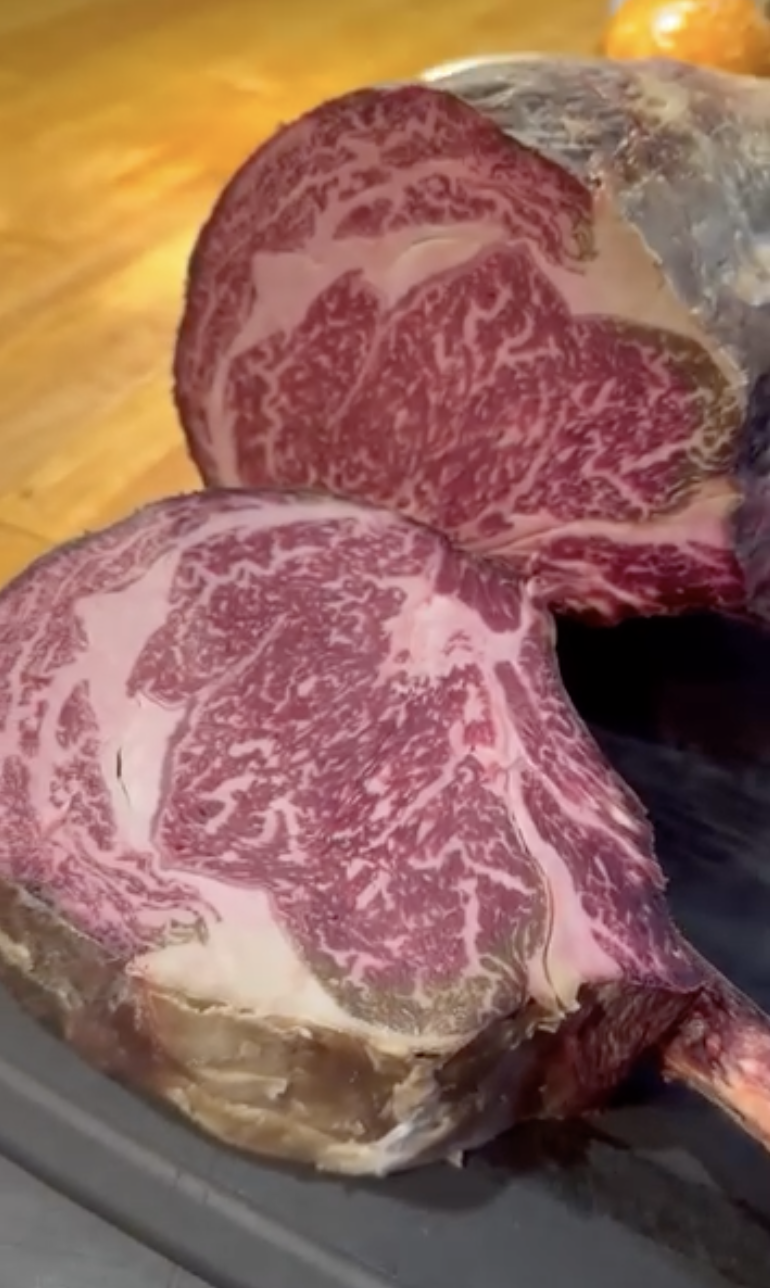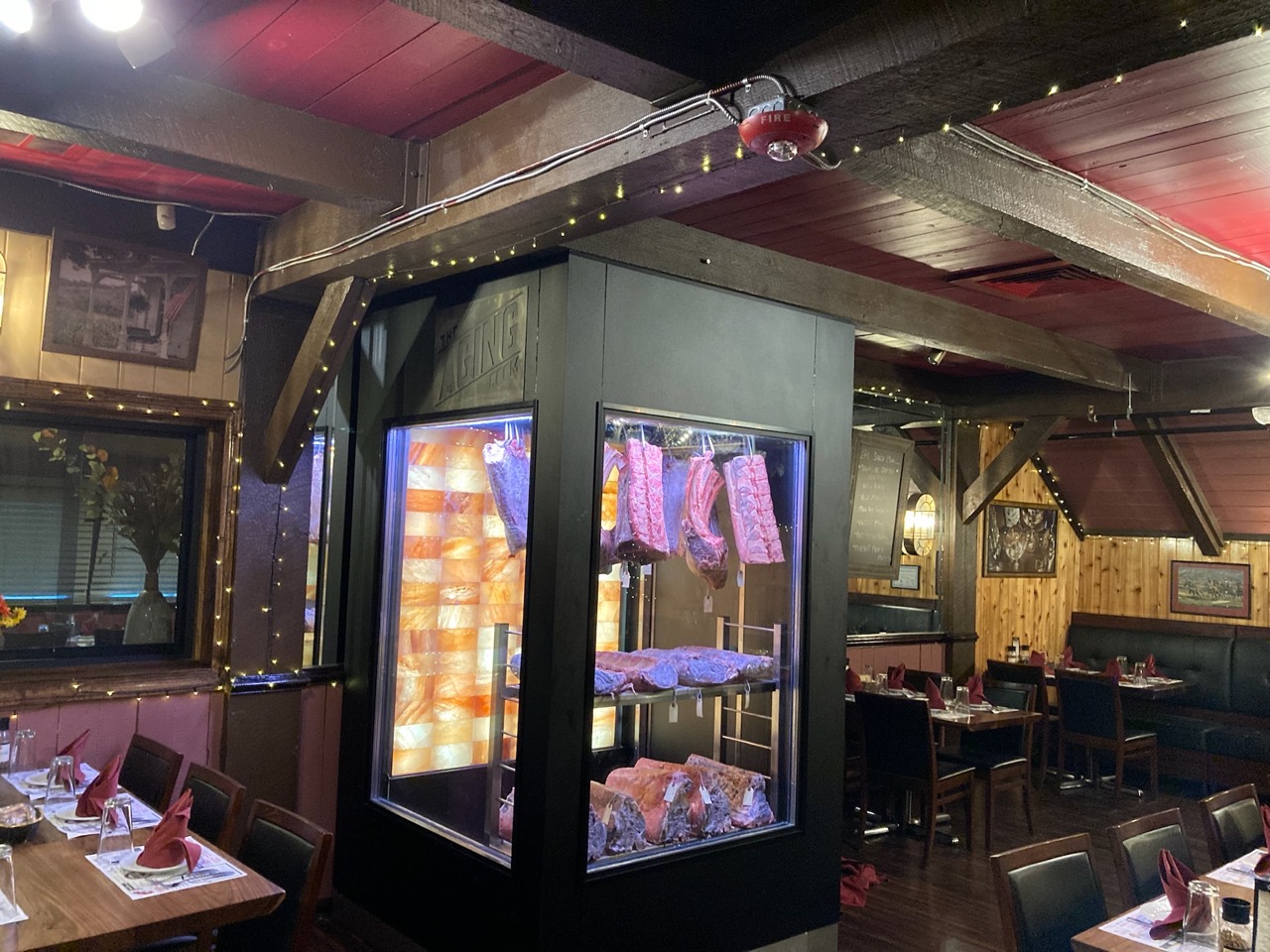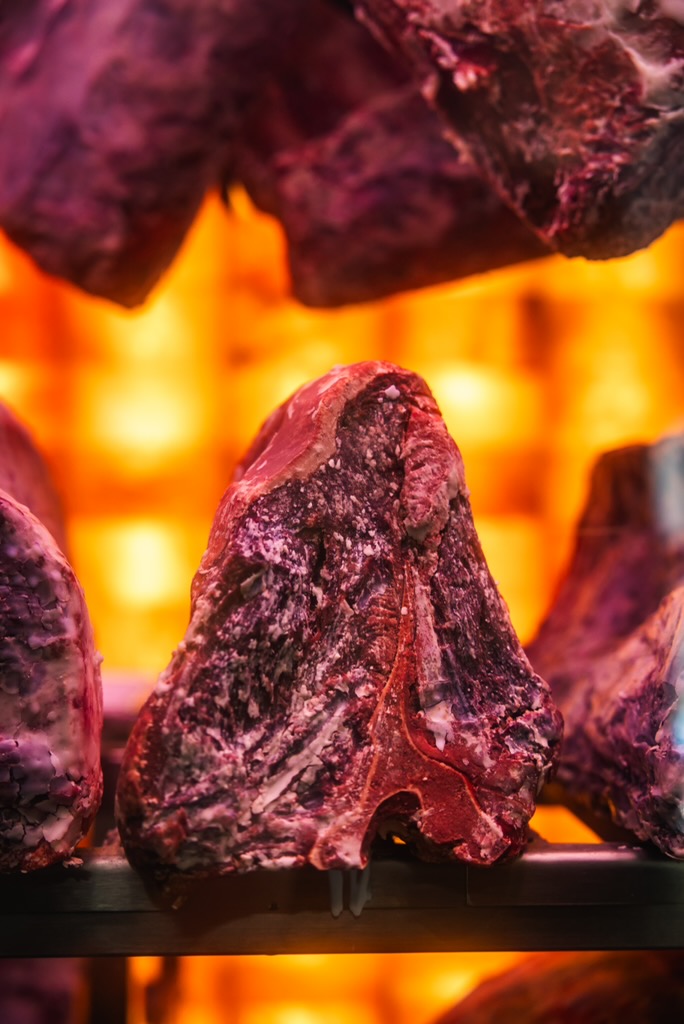
Achieve A Quality Taste And Tenderness While Dry Aging
Dry-aging meat is a process that results in a more flavorful and tender product. To achieve the highest quality taste and tenderness, it's important to strive for an even taste profile with no interruptions. When customers pay top dollar for a premium product like dry-aged meat, they expect and deserve the best possible quality. Poor-quality products with an uneven taste profile (meaty parts vs. fatty parts) can lead to bad reviews and lost customers. On the other hand, a dry-aged product with an even taste profile that exceeds customer expectations can leave a lasting positive impression.
Customers should say “whoa!” and not “why?” after trying your dry-aged offerings!
So, how can one achieve consistently high-quality taste and tenderness without any interruptions or inconsistencies?
There are several dry aging techniques, including using salt, mold, butter, fat, whiskey, and more. However, the technique should not mislead us. We always need to consider that the primary goal of dry aging is to achieve a delicious meaty flavor and tenderize the meat. That can only be achieved by creating an untreated human environment with constant airflow. Everything else is a different technique that can, however, significantly contribute to the outcome, but they are not defining aged or not aged. For example, using salt will significantly increase the yield and taste profile, and using different butter will change the taste profile.
Thus, the primary goal we have is to make sure we can create a sustainable and uninterrupted climate.
Once we determine the objective, we can select the appropriate technique and equipment for dry aging.
Technique
We find The Himalayan Salt Dry-Aging Technique to be one of the most effective methods for producing high-quality meat. This process is based on the fact that using natural methods is the best way to achieve optimal results. Himalayan salt is a natural and pristine form of salt; salt has been used for hundreds of years in this technique. The process results in an even taste profile, a higher yield, and the elimination of bacteria. With the help of modern technology, it is now possible to recreate this old process while still maintaining its natural essence. Our Aging Rooms use a controlled microclimate that is enriched with Himalayan salt to facilitate the aging process. We use salt-resistant materials to ensure durability and avoid waste. Our chambers are designed to present meat collections in the right shade and generate positive emotions. This process is proven to produce tender, savory meat that is of the highest quality.
What equipment is best to use for dry aging?
First of all, you need to make sure that you will be able to create a sustainable microclimate and airflow without interruption.
What size of equipment do you need to use? Dry Aging Equipment: walk-in vs. reach-in?
Based on your load task, you can determine the size of the equipment. Keep in mind that if you want to create a very sustainable microclimate, you need to go bigger than smaller; in fact, bigger is better. Every time you open an Aging Room, you are flashing out the aging microclimate and letting warm air in, which builds up excessive moisture that you need to deal with. As a result, you intensify airflow, and the meat goes hard like cocoon, which leads to a decrease in yield and breaks up the teste profile. The aging taste is noticeable on the fatty parts but not on the meaty parts, and as a result, it impacts customer satisfaction greatly. But if you use a small device and don’t open it every day, you will achieve an even taste profile and tenderness, too. But if you use a small device for retail or restaurant and sell from it every day, it is challenging to make sure it is used properly, as usually it is opened too frequently with the consequences described above.
On the other hand, if you use a bigger device, for example, a walk-in 5 ft by 5 ft or bigger, you will be able to achieve an even taste profile easier, as it is difficult to disrupt a microclimate in such a room. Also, you can put up a regular butcher show for your customers while a butcher works inside the aging chamber. Besides, because the room is big, you will now be able to age different types of meat because they are not touching each other. Beef, pork, lamb, or even wild game.
Wild game, however, requires carefulness. If it is shot by a hunter, it takes too long to get the blood properly out of the body and therefore will affect the aging process and the taste. So, you need to have a controlled slaughter.
It is also important to point out that information about meat maturing is not abstract.
For strength/tenderness, objective results can be obtained with shear force measurement devices such as the Kramer shear cell, Warner-Bratzler shear device, or penetration measurements such as Instron devices. Taste: You can feel it! If it is sour, it is wet aging; if it is umami, it is dry aging; and if it is metallic, most likely it is freshly prepared.
To continue our series about different meat dry aging, now it is time for sheep aging. Author: Herrmann Jakob, a Master Butcher, vocational schoolteacher, and Head of the Master School for Butchers in Kulmbach, Bavaria, Germany.
Preparation
Proper preparation of animal carcasses is crucial to ensuring the quality of the meat. Several factors, such as age, sex, fleshiness, and fatness, significantly influence the tenderness of the meat. Young animals under six months are tender when aged for four to five days, while older animals require longer ripening periods. Rams and billy goats are not suitable for consumption due to their intense urine-like sexual odor. On the other hand, female and castrated male animals yield good results. It is essential to remove the kidney fat immediately after slaughter to reduce the sheep or goat flavor in the meat. This also enables the carcass to cool quickly and dry out. Rapid cooling after slaughter can result in cold shortening, where cold rigor sets in before rigor mortis, causing the meat to become tough. Hanging the carcass freely with minimal air movement slows down the cooling process. This ensures that the meat does not cool too quickly at the beginning, thus, reducing the risk of cold shortening. In summary, proper handling of animal carcasses is vital to ensuring the quality of meat and, thus, the satisfaction of consumers.
Dry Aging
The full aromatic, nutty flavor.
When it comes to aging meat, proper preparation is crucial. The meat must be allowed to dry thoroughly after the animal has been slaughtered. Once it is ready for refrigeration, it should be stored at a temperature just under 44°F with slow air movement during the first night. If you're aging whole carcasses, legs, or even back, it's best to keep them at a temperature range of 32–35.6°F for optimal results. It's important to ensure that the fat cover remains intact during the aging process. If the fat cover is not sufficient, a carefully balanced mixture of 60% rendered lamb tallow and 40% rapeseed or oil can be used to enhance the flavor. In The Aging Room, both sheep and goat meat are aged to perfection and develop a full aromatic, nutty flavor that is sure to delight your taste buds. Properly aged meat can truly enhance the taste of your meal, and it's worth taking the time to do it right! The meat will get the full aromatic, nutty flavor.
Learn More About The Aging Room®'s Chamber
By combining traditional aging processes and modern technology, The Aging Room® uses state-of-the-art climate control equipment with Himalayan salt to create an aging-friendly, natural microclimate to dry-age steaks to their fullest potential. The steak rests and ripens in a natural environment, never frozen, vacuum-sealed, or chemically preserved, allowing restaurants, butcheries, and retail shops to utilize every part of the meat. Learn more about the benefits of The Aging Room Chamber.
Other news
-
 News
Why Full-System Certification Matters in Dry Aging Equipment — And What Sets The Aging Room® Apart
18 Jul 2025
News
Why Full-System Certification Matters in Dry Aging Equipment — And What Sets The Aging Room® Apart
18 Jul 2025
-
 News
Understanding the Art of Aging: How Dry Aging with Himalayan Salt Transforms Meat Quality
01 Jul 2025
News
Understanding the Art of Aging: How Dry Aging with Himalayan Salt Transforms Meat Quality
01 Jul 2025
-
 News
UV Light vs. Himalayan Salt in Dry Aging Meat: What Really Matters for Flavor and Quality
03 Jun 2025
News
UV Light vs. Himalayan Salt in Dry Aging Meat: What Really Matters for Flavor and Quality
03 Jun 2025